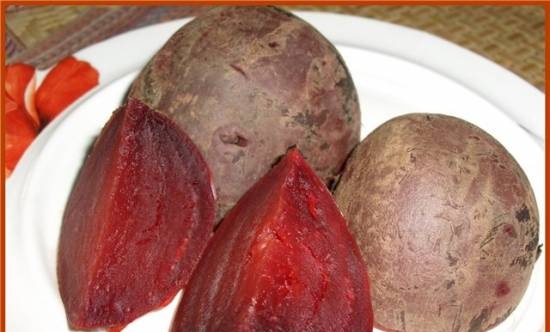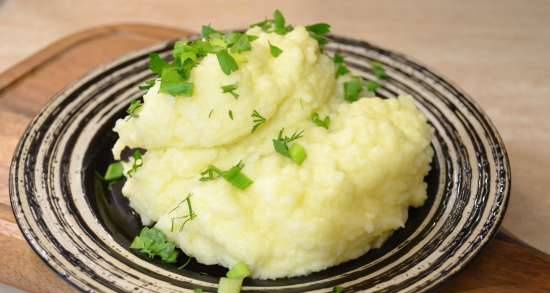|
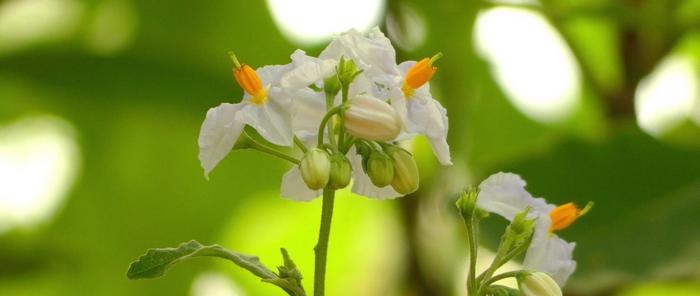 The issue of obtaining decent yields of potatoes in combination with good quality on their plots is now of concern to many residents. In addition, some of them do not have practical skills in working with this culture. The task is complicated by the fact that garden plots, as a rule, are allocated on undeveloped land. The issue of obtaining decent yields of potatoes in combination with good quality on their plots is now of concern to many residents. In addition, some of them do not have practical skills in working with this culture. The task is complicated by the fact that garden plots, as a rule, are allocated on undeveloped land.
Let's make a reservation right away: potatoes are one of the most demanding crops for the soil, its density, moisture regime, nutrients compared to cereals or grasses. The success of the business is guaranteed if the gardener concentrates on solving the following practical issues: radical soil cultivation, rational fertilization, selection of varieties and quality seeds, optimal timing, methods and density of planting, timely care, and combating diseases and pests.
 The conditions for the growth of potatoes in the cultivated areas cannot be characterized by any one feature. With a variety of soil composition in a vast region of possible zones of potato growing in the country, these are usually meadow-bog, floodplain, sod-podzolic, gray, peat soils, less often - chernozems. On the peaty soils of Siberia and the Non-Chernozem region, the floodplains of all zones, after two to three years of cultivation, it is possible to obtain a yield of 3-4 quintals per one hundred square meters. The conditions for the growth of potatoes in the cultivated areas cannot be characterized by any one feature. With a variety of soil composition in a vast region of possible zones of potato growing in the country, these are usually meadow-bog, floodplain, sod-podzolic, gray, peat soils, less often - chernozems. On the peaty soils of Siberia and the Non-Chernozem region, the floodplains of all zones, after two to three years of cultivation, it is possible to obtain a yield of 3-4 quintals per one hundred square meters.
Without preliminary cultivation of such soils, potatoes often fail because of the high standing of groundwater and the presence of "saucers", strong acidity, poverty in phosphorus and potassium, and sometimes a thin humus horizon. In waterlogged areas, first of all, the level of groundwater is lowered to 65 by the beginning of planting, and during the growing season - to 100 cm. Due to the very high acidity (pH 3.0-3.5), high-moor peatlands should be limed up to 120 kg, low-lying ones - up to 160, sod-podzolic sandy loam - up to 60, loamy and clayey - up to 80 kg per 1 hundred square meters. Materials: fluff lime, dolomite flour.
 During development, a layer of grasses is dug up, the soil is limed, fertilized and then plowed. During development, a layer of grasses is dug up, the soil is limed, fertilized and then plowed.
In the already developed areas, for quick soil ripening, it is better to dig in the spring and plant potatoes using the ridge method. For the same purpose, in the Far East with a monsoon climate, in the fall, ridges up to 40 cm high and 140 cm spacing are made.
 With a lack of heat in the regions of the Far North, Western and Eastern Siberia, microbiological processes are poorly developed in soils. Therefore, it is necessary to refuel with large rates of manure (10-12 quintals per 1 hundred square meters), as well as methods of early snow removal (for 2-3 weeks) - scattering peat and ash. With a lack of heat in the regions of the Far North, Western and Eastern Siberia, microbiological processes are poorly developed in soils. Therefore, it is necessary to refuel with large rates of manure (10-12 quintals per 1 hundred square meters), as well as methods of early snow removal (for 2-3 weeks) - scattering peat and ash.
The purpose of the products (early consumption, for the winter), as well as natural conditions, determine the choice of varieties. According to their early maturity, they are divided into 5 groups: early (complete the growing season in 70-80 days); medium early (81-90 days); mid-season (100-115 days); medium late (120-130 days) and late (more than 130 days). The formation of tubers after the emergence of seedlings, respectively, begins in 10-15; twenty; 20-25; 27 and 35 days. Early varieties are less productive than varieties of later ripeness groups. If in the middle lane varieties of all ripeness groups are acceptable, then in areas with a lack of heat (the Far North, North-West, North-East, Siberia) - only early ripening and cold-resistant (Falensky, Uralsky early, Sosnovsky, Priekulsky early, Polet, Vyatka, Spring, early Khibinsky, Priobsky, Pioner, Filatovsky).
 For planting select only healthy tubers weighing 80-100 g. To get earlier production, as well as to shorten the growing season by 10-12 days, to avoid late blight and early autumn frosts, germination is mandatory. With light germination, potatoes are stacked on racks on the floor with a layer of 1.5-2 tubers, tops up, excluding direct sunlight.Reception is carried out within 25-45 days before the formation of sprouts of 1-2 cm at a temperature of 12-15 ° C and air humidity 85-90%. Higher temperatures and dry air can lead to undesirable results (delayed germination, reduced yield). It is possible to germinate tubers in plastic light-permeable bags with holes for air exchange. Their size is 28X 135 cm, the diameter of the holes is 1.5 cm. The bags are filled to 2/3 of the volume, intercepted in the middle and placed on hangers. Cutting potatoes is used only when there is a lack of seeds. Large tubers can be cut before setting for germination. For this, an incision is made along the tuber, without bringing it to the base by 1-1.5 cm. On the day of planting, the tubers are broken into 2 parts. During these operations, it is useful to spray: for the first time - with a 0.02% solution of potassium permanganate (2 g per bucket of water); the second time - with a water extract of wood ash (1 glass of ash per 2 liters of water, insist for a day and then strain). For planting select only healthy tubers weighing 80-100 g. To get earlier production, as well as to shorten the growing season by 10-12 days, to avoid late blight and early autumn frosts, germination is mandatory. With light germination, potatoes are stacked on racks on the floor with a layer of 1.5-2 tubers, tops up, excluding direct sunlight.Reception is carried out within 25-45 days before the formation of sprouts of 1-2 cm at a temperature of 12-15 ° C and air humidity 85-90%. Higher temperatures and dry air can lead to undesirable results (delayed germination, reduced yield). It is possible to germinate tubers in plastic light-permeable bags with holes for air exchange. Their size is 28X 135 cm, the diameter of the holes is 1.5 cm. The bags are filled to 2/3 of the volume, intercepted in the middle and placed on hangers. Cutting potatoes is used only when there is a lack of seeds. Large tubers can be cut before setting for germination. For this, an incision is made along the tuber, without bringing it to the base by 1-1.5 cm. On the day of planting, the tubers are broken into 2 parts. During these operations, it is useful to spray: for the first time - with a 0.02% solution of potassium permanganate (2 g per bucket of water); the second time - with a water extract of wood ash (1 glass of ash per 2 liters of water, insist for a day and then strain).
It is considered well established that fertilizers account for 50% of the increase in potato yield. Their introduction on undeveloped areas has some specificity and should be different from the introduction on old arable lands.
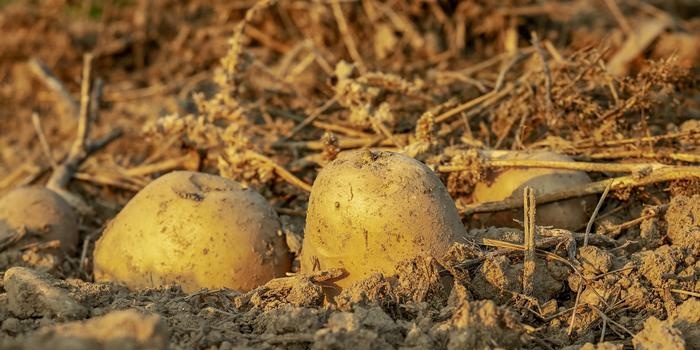 The best system is one that combines organic and mineral fertilizers. It is impractical to build a fertilizer system only on the basis of mineral fertilizers. The best effect on the yield and quality of tubers is ensured with the introduction of semi-rotted manure or peat-manure composts. Fresh manure is less suitable, because it is associated with a deterioration in the quality of potatoes. The introduction of pure peat usually does not increase the yield (the exception is peat rich in vivianite). When preparing composts, 1 part of peat is taken for 1 part of manure (if not, post-harvest organic residues can be used), measured and kept in a pile until it is added to the soil for at least 6-8 months. The best system is one that combines organic and mineral fertilizers. It is impractical to build a fertilizer system only on the basis of mineral fertilizers. The best effect on the yield and quality of tubers is ensured with the introduction of semi-rotted manure or peat-manure composts. Fresh manure is less suitable, because it is associated with a deterioration in the quality of potatoes. The introduction of pure peat usually does not increase the yield (the exception is peat rich in vivianite). When preparing composts, 1 part of peat is taken for 1 part of manure (if not, post-harvest organic residues can be used), measured and kept in a pile until it is added to the soil for at least 6-8 months.
On all types of soils, moderation should be observed in the rates of manure application, since exceeding them against the recommended ones entails over-enrichment of the soil with nitrogen, "fattening of the tops", a shortage of crops, and harvesting of unripe potatoes with poor taste. On newly reclaimed lands, the upper limit level of organic fertilizer norms is: half-rotted manure or good composts - on sandy loam soils up to 8-10 centners, on loamy soils of the Non-Chernozem region - up to 7-8 centners per one hundred square meters. The use of fresh litterless manure should be considered as forced, in this case, the rates are reduced by 20%.
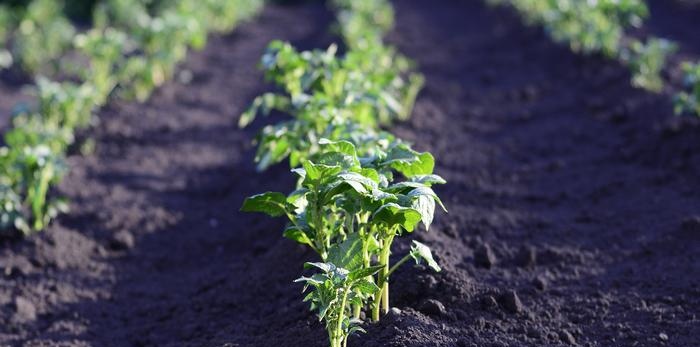 Be careful with poultry droppings - this is mainly a one-way nitrogen fertilizer. The maximum rate of application of raw poultry manure - 4-5 centners, and dry - 0.3-0.5 centners per 1 hundred square meters / To eliminate nitrogen imbalance, be sure to add 1.5-1.8 kg of phosphorus and 1.5- 1.8 kg of potassium per 1 hundred square meters. Be careful with poultry droppings - this is mainly a one-way nitrogen fertilizer. The maximum rate of application of raw poultry manure - 4-5 centners, and dry - 0.3-0.5 centners per 1 hundred square meters / To eliminate nitrogen imbalance, be sure to add 1.5-1.8 kg of phosphorus and 1.5- 1.8 kg of potassium per 1 hundred square meters.
On high-ash lowland bogs, rich in nitrogen and phosphorus, only potash fertilizers are applied in the form of potassium chloride at the rate of up to 1.8-3.0 kg of active ingredient per 1 hundred square meters. In swamps that are not provided with phosphorus, phosphorus fertilizers are also applied at the rate of 0.9-1.5 kg per 1 hundred square meters. On transitional bogs, in addition to potash and phosphorus, nitrogen fertilizers are also applied at 0.45-0.6 kg of nitrogen per hundred square meters. On peat bogs, copper-containing fertilizers in the form of copper sulphate at 0.25-0.50 kg per 1 hundred square meters are especially useful.
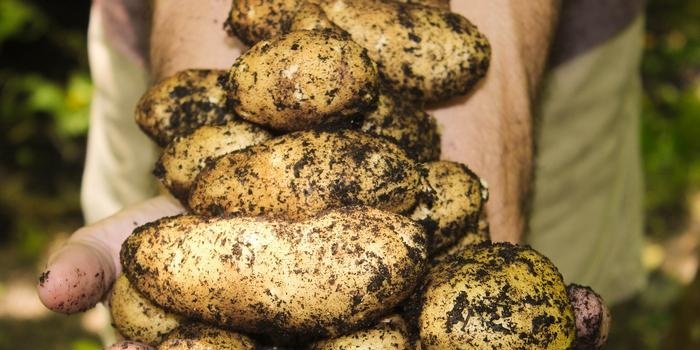 On floodplains, use (in kg of active ingredient per 1 hundred square meters) nitrogen 0.45-0.6, phosphorus 0.6-1.5 and potassium 1.5-2.2. On floodplains, use (in kg of active ingredient per 1 hundred square meters) nitrogen 0.45-0.6, phosphorus 0.6-1.5 and potassium 1.5-2.2.
 With sufficient reserves of organic and mineral fertilizers, they are scattered for digging, and if there is a shortage, locally under the tuber in the form of a mixture and with a layer of soil to exclude burns of tubers and roots. With a good basic filling of the soil, summer dressing turns out to be ineffective, because they lead to a second wave of growth in the mass of tops to the detriment of tuberization and the formation of more starchy and tasty tubers. Top dressing is useful only if it was not possible to apply fertilizer before planting, as well as in years with cold springs and frequent rains.In such cases, they are fed with nitroammophos or other complex fertilizers, you can limit yourself to simple ones, primarily nitrogen and potassium fertilizers. Doses of nutrients in top dressing 0.25-0.5 kg of active ingredient per 1 hundred square meters. It is advisable to fertilize no later than the budding phase or the beginning of flowering. Fertilizers are placed here in rows to a depth of 8 - 12 cm. With sufficient reserves of organic and mineral fertilizers, they are scattered for digging, and if there is a shortage, locally under the tuber in the form of a mixture and with a layer of soil to exclude burns of tubers and roots. With a good basic filling of the soil, summer dressing turns out to be ineffective, because they lead to a second wave of growth in the mass of tops to the detriment of tuberization and the formation of more starchy and tasty tubers. Top dressing is useful only if it was not possible to apply fertilizer before planting, as well as in years with cold springs and frequent rains.In such cases, they are fed with nitroammophos or other complex fertilizers, you can limit yourself to simple ones, primarily nitrogen and potassium fertilizers. Doses of nutrients in top dressing 0.25-0.5 kg of active ingredient per 1 hundred square meters. It is advisable to fertilize no later than the budding phase or the beginning of flowering. Fertilizers are placed here in rows to a depth of 8 - 12 cm.
 On floodplain and peat-boggy soils, in comparison with mineral soils, planting is delayed by 10-12 days. Here, the ridge method with a depth of planting tubers of 6-10 cm is preferable. Planting density: for early and mid-early varieties - 70X 22-25 cm, and for varieties of a later ripeness group - 70X 35 cm, or bring the row spacing to 80 cm. On floodplain and peat-boggy soils, in comparison with mineral soils, planting is delayed by 10-12 days. Here, the ridge method with a depth of planting tubers of 6-10 cm is preferable. Planting density: for early and mid-early varieties - 70X 22-25 cm, and for varieties of a later ripeness group - 70X 35 cm, or bring the row spacing to 80 cm.
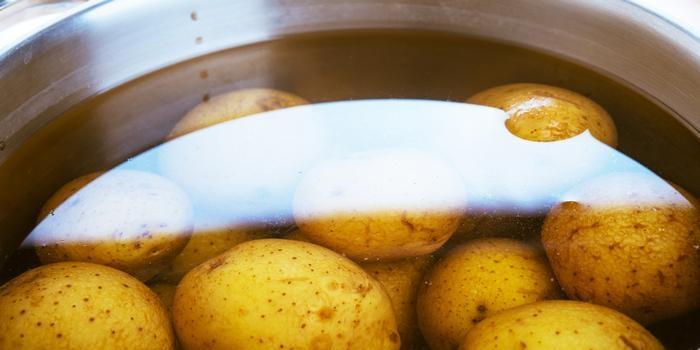 When leaving, in addition to solving the problem of creating a looser soil layer and killing weeds, it is necessary to bring the soil layer in the ridge above the tubers to 12-15 cm. This will avoid damage to tubers by late blight or the action of destructive early autumn frosts. When leaving, in addition to solving the problem of creating a looser soil layer and killing weeds, it is necessary to bring the soil layer in the ridge above the tubers to 12-15 cm. This will avoid damage to tubers by late blight or the action of destructive early autumn frosts.
On low-lying lands, phytophthora develops more strongly. The first treatment is carried out before the appearance of signs of the disease during the budding period. Then repeat at least three times at intervals of 10-12 days. Preparations - 50% copper oxychloride, concentration 0.5%. Consumption of solution in water is 4 liters per 1 hundred square meters. Try to get the drug evenly on all leaves, especially on the bottom of them.
A. V. Korshunov
|
 The issue of obtaining decent yields of potatoes in combination with good quality on their plots is now of concern to many residents. In addition, some of them do not have practical skills in working with this culture. The task is complicated by the fact that garden plots, as a rule, are allocated on undeveloped land.
The issue of obtaining decent yields of potatoes in combination with good quality on their plots is now of concern to many residents. In addition, some of them do not have practical skills in working with this culture. The task is complicated by the fact that garden plots, as a rule, are allocated on undeveloped land. The conditions for the growth of potatoes in the cultivated areas cannot be characterized by any one feature. With a variety of soil composition in a vast region of possible zones of potato growing in the country, these are usually meadow-bog, floodplain, sod-podzolic, gray, peat soils, less often - chernozems. On the peaty soils of Siberia and the Non-Chernozem region, the floodplains of all zones, after two to three years of cultivation, it is possible to obtain a yield of 3-4 quintals per one hundred square meters.
The conditions for the growth of potatoes in the cultivated areas cannot be characterized by any one feature. With a variety of soil composition in a vast region of possible zones of potato growing in the country, these are usually meadow-bog, floodplain, sod-podzolic, gray, peat soils, less often - chernozems. On the peaty soils of Siberia and the Non-Chernozem region, the floodplains of all zones, after two to three years of cultivation, it is possible to obtain a yield of 3-4 quintals per one hundred square meters. During development, a layer of grasses is dug up, the soil is limed, fertilized and then plowed.
During development, a layer of grasses is dug up, the soil is limed, fertilized and then plowed. With a lack of heat in the regions of the Far North, Western and Eastern Siberia, microbiological processes are poorly developed in soils. Therefore, it is necessary to refuel with large rates of manure (10-12 quintals per 1 hundred square meters), as well as methods of early snow removal (for 2-3 weeks) - scattering peat and ash.
With a lack of heat in the regions of the Far North, Western and Eastern Siberia, microbiological processes are poorly developed in soils. Therefore, it is necessary to refuel with large rates of manure (10-12 quintals per 1 hundred square meters), as well as methods of early snow removal (for 2-3 weeks) - scattering peat and ash. For planting select only healthy tubers weighing 80-100 g. To get earlier production, as well as to shorten the growing season by 10-12 days, to avoid late blight and early autumn frosts, germination is mandatory. With light germination, potatoes are stacked on racks on the floor with a layer of 1.5-2 tubers, tops up, excluding direct sunlight.Reception is carried out within 25-45 days before the formation of sprouts of 1-2 cm at a temperature of 12-15 ° C and air humidity 85-90%. Higher temperatures and dry air can lead to undesirable results (delayed germination, reduced yield). It is possible to germinate tubers in plastic light-permeable bags with holes for air exchange. Their size is 28X 135 cm, the diameter of the holes is 1.5 cm. The bags are filled to 2/3 of the volume, intercepted in the middle and placed on hangers. Cutting potatoes is used only when there is a lack of seeds. Large tubers can be cut before setting for germination. For this, an incision is made along the tuber, without bringing it to the base by 1-1.5 cm. On the day of planting, the tubers are broken into 2 parts. During these operations, it is useful to spray: for the first time - with a 0.02% solution of potassium permanganate (2 g per bucket of water); the second time - with a water extract of wood ash (1 glass of ash per 2 liters of water, insist for a day and then strain).
For planting select only healthy tubers weighing 80-100 g. To get earlier production, as well as to shorten the growing season by 10-12 days, to avoid late blight and early autumn frosts, germination is mandatory. With light germination, potatoes are stacked on racks on the floor with a layer of 1.5-2 tubers, tops up, excluding direct sunlight.Reception is carried out within 25-45 days before the formation of sprouts of 1-2 cm at a temperature of 12-15 ° C and air humidity 85-90%. Higher temperatures and dry air can lead to undesirable results (delayed germination, reduced yield). It is possible to germinate tubers in plastic light-permeable bags with holes for air exchange. Their size is 28X 135 cm, the diameter of the holes is 1.5 cm. The bags are filled to 2/3 of the volume, intercepted in the middle and placed on hangers. Cutting potatoes is used only when there is a lack of seeds. Large tubers can be cut before setting for germination. For this, an incision is made along the tuber, without bringing it to the base by 1-1.5 cm. On the day of planting, the tubers are broken into 2 parts. During these operations, it is useful to spray: for the first time - with a 0.02% solution of potassium permanganate (2 g per bucket of water); the second time - with a water extract of wood ash (1 glass of ash per 2 liters of water, insist for a day and then strain). The best system is one that combines organic and mineral fertilizers. It is impractical to build a fertilizer system only on the basis of mineral fertilizers. The best effect on the yield and quality of tubers is ensured with the introduction of semi-rotted manure or peat-manure composts. Fresh manure is less suitable, because it is associated with a deterioration in the quality of potatoes. The introduction of pure peat usually does not increase the yield (the exception is peat rich in vivianite). When preparing composts, 1 part of peat is taken for 1 part of manure (if not, post-harvest organic residues can be used), measured and kept in a pile until it is added to the soil for at least 6-8 months.
The best system is one that combines organic and mineral fertilizers. It is impractical to build a fertilizer system only on the basis of mineral fertilizers. The best effect on the yield and quality of tubers is ensured with the introduction of semi-rotted manure or peat-manure composts. Fresh manure is less suitable, because it is associated with a deterioration in the quality of potatoes. The introduction of pure peat usually does not increase the yield (the exception is peat rich in vivianite). When preparing composts, 1 part of peat is taken for 1 part of manure (if not, post-harvest organic residues can be used), measured and kept in a pile until it is added to the soil for at least 6-8 months. Be careful with poultry droppings - this is mainly a one-way nitrogen fertilizer. The maximum rate of application of raw poultry manure - 4-5 centners, and dry - 0.3-0.5 centners per 1 hundred square meters / To eliminate nitrogen imbalance, be sure to add 1.5-1.8 kg of phosphorus and 1.5- 1.8 kg of potassium per 1 hundred square meters.
Be careful with poultry droppings - this is mainly a one-way nitrogen fertilizer. The maximum rate of application of raw poultry manure - 4-5 centners, and dry - 0.3-0.5 centners per 1 hundred square meters / To eliminate nitrogen imbalance, be sure to add 1.5-1.8 kg of phosphorus and 1.5- 1.8 kg of potassium per 1 hundred square meters. On floodplains, use (in kg of active ingredient per 1 hundred square meters) nitrogen 0.45-0.6, phosphorus 0.6-1.5 and potassium 1.5-2.2.
On floodplains, use (in kg of active ingredient per 1 hundred square meters) nitrogen 0.45-0.6, phosphorus 0.6-1.5 and potassium 1.5-2.2. With sufficient reserves of organic and mineral fertilizers, they are scattered for digging, and if there is a shortage, locally under the tuber in the form of a mixture and with a layer of soil to exclude burns of tubers and roots. With a good basic filling of the soil, summer dressing turns out to be ineffective, because they lead to a second wave of growth in the mass of tops to the detriment of tuberization and the formation of more starchy and tasty tubers. Top dressing is useful only if it was not possible to apply fertilizer before planting, as well as in years with cold springs and frequent rains.In such cases, they are fed with nitroammophos or other complex fertilizers, you can limit yourself to simple ones, primarily nitrogen and potassium fertilizers. Doses of nutrients in top dressing 0.25-0.5 kg of active ingredient per 1 hundred square meters. It is advisable to fertilize no later than the budding phase or the beginning of flowering. Fertilizers are placed here in rows to a depth of 8 - 12 cm.
With sufficient reserves of organic and mineral fertilizers, they are scattered for digging, and if there is a shortage, locally under the tuber in the form of a mixture and with a layer of soil to exclude burns of tubers and roots. With a good basic filling of the soil, summer dressing turns out to be ineffective, because they lead to a second wave of growth in the mass of tops to the detriment of tuberization and the formation of more starchy and tasty tubers. Top dressing is useful only if it was not possible to apply fertilizer before planting, as well as in years with cold springs and frequent rains.In such cases, they are fed with nitroammophos or other complex fertilizers, you can limit yourself to simple ones, primarily nitrogen and potassium fertilizers. Doses of nutrients in top dressing 0.25-0.5 kg of active ingredient per 1 hundred square meters. It is advisable to fertilize no later than the budding phase or the beginning of flowering. Fertilizers are placed here in rows to a depth of 8 - 12 cm. On floodplain and peat-boggy soils, in comparison with mineral soils, planting is delayed by 10-12 days. Here, the ridge method with a depth of planting tubers of 6-10 cm is preferable. Planting density: for early and mid-early varieties - 70X 22-25 cm, and for varieties of a later ripeness group - 70X 35 cm, or bring the row spacing to 80 cm.
On floodplain and peat-boggy soils, in comparison with mineral soils, planting is delayed by 10-12 days. Here, the ridge method with a depth of planting tubers of 6-10 cm is preferable. Planting density: for early and mid-early varieties - 70X 22-25 cm, and for varieties of a later ripeness group - 70X 35 cm, or bring the row spacing to 80 cm. When leaving, in addition to solving the problem of creating a looser soil layer and killing weeds, it is necessary to bring the soil layer in the ridge above the tubers to 12-15 cm. This will avoid damage to tubers by late blight or the action of destructive early autumn frosts.
When leaving, in addition to solving the problem of creating a looser soil layer and killing weeds, it is necessary to bring the soil layer in the ridge above the tubers to 12-15 cm. This will avoid damage to tubers by late blight or the action of destructive early autumn frosts.